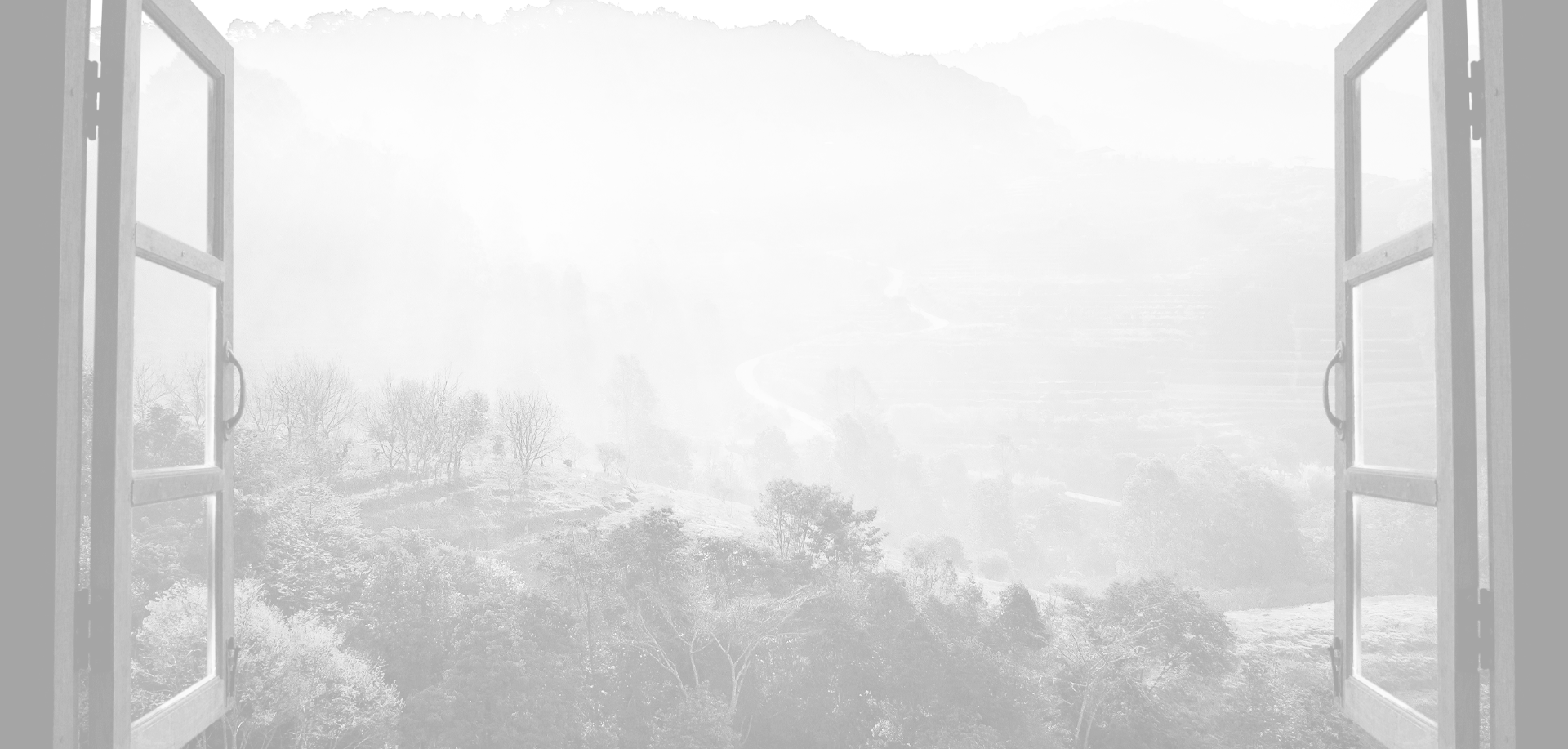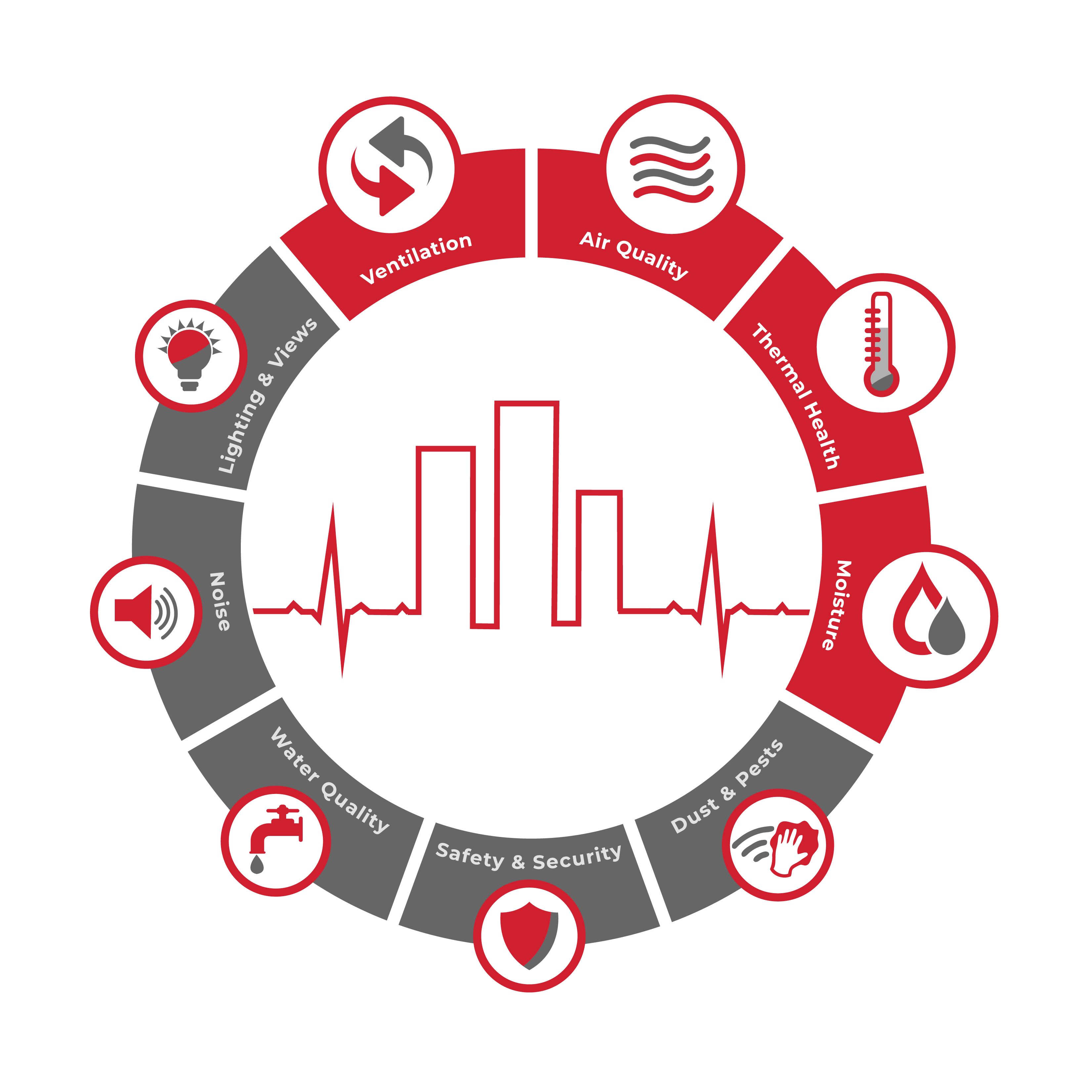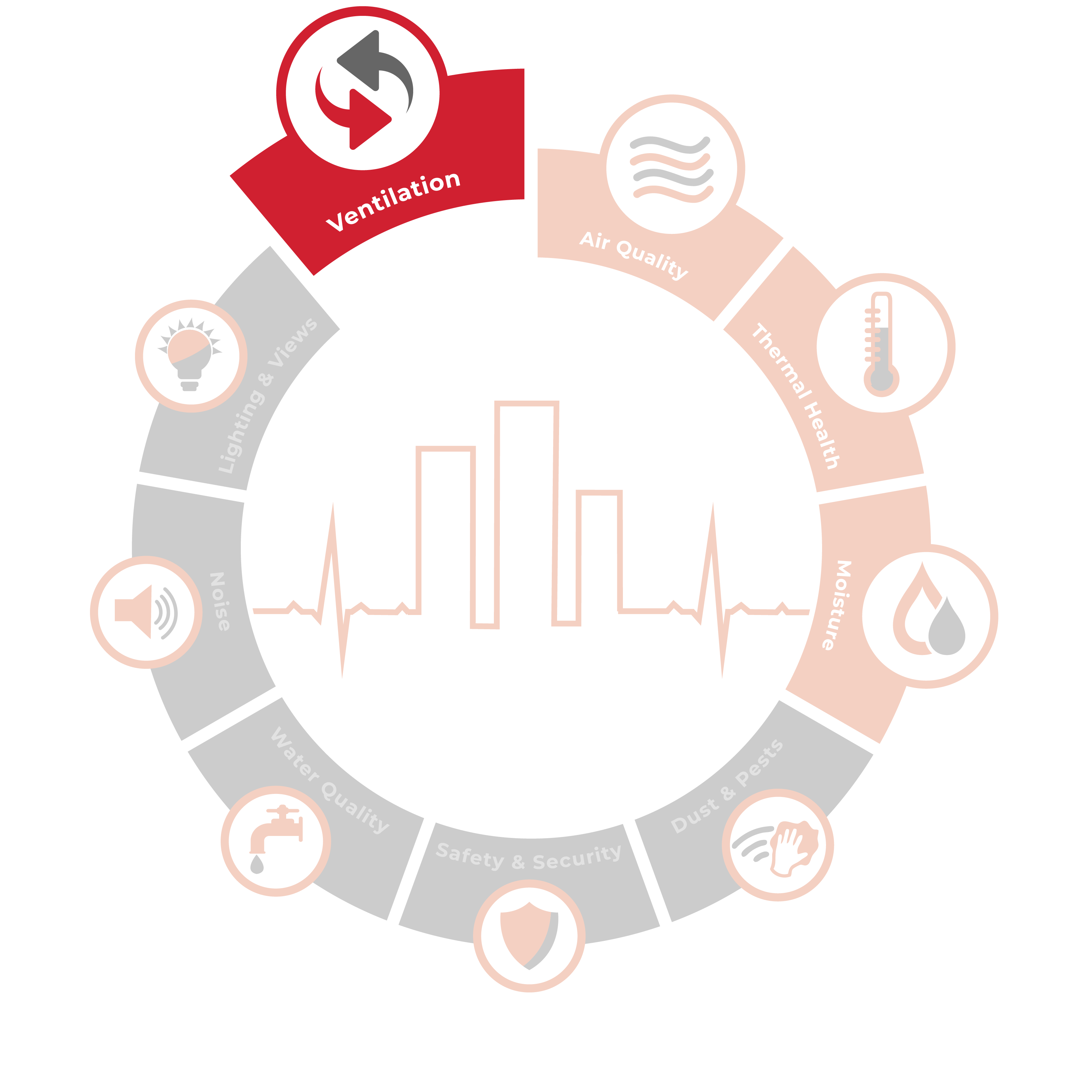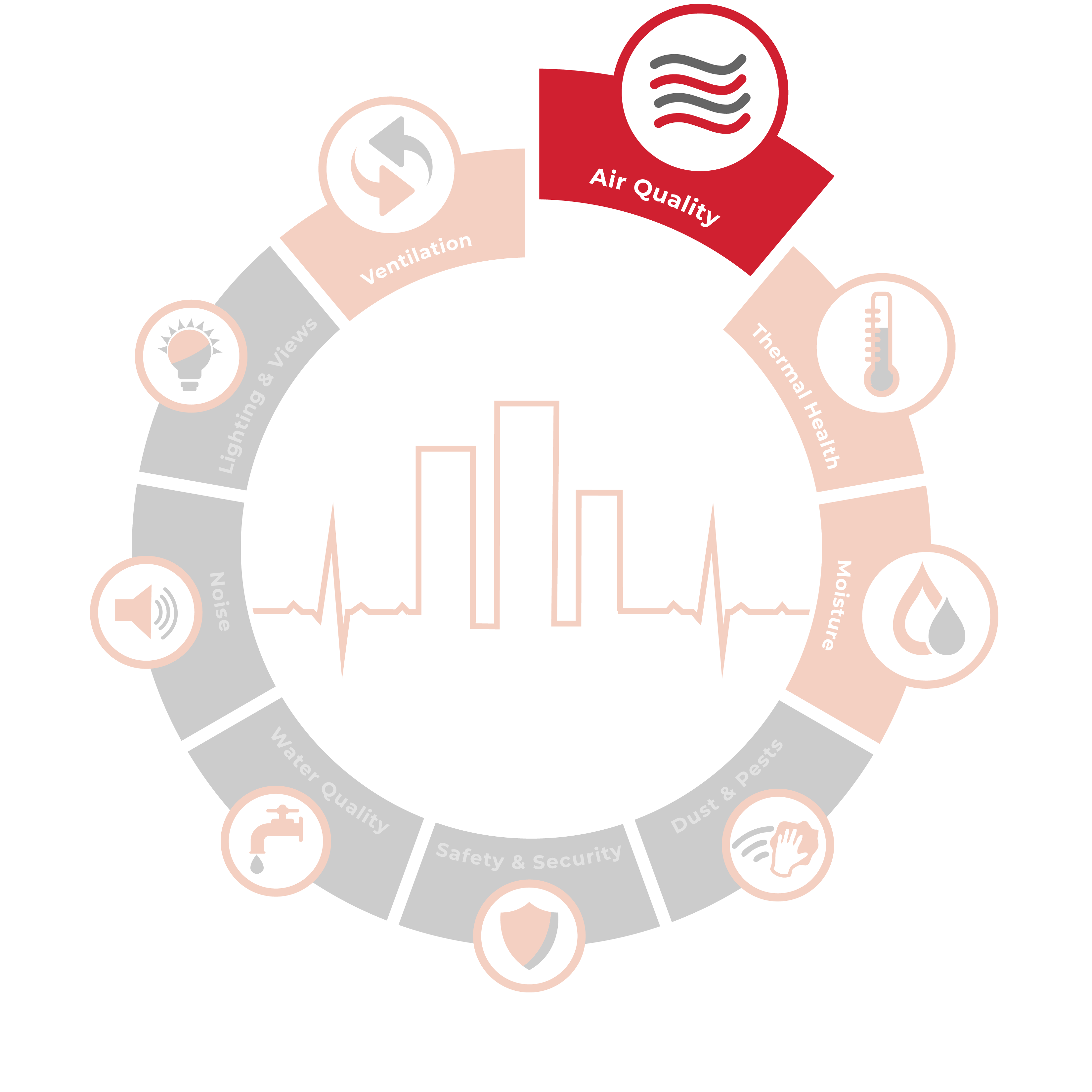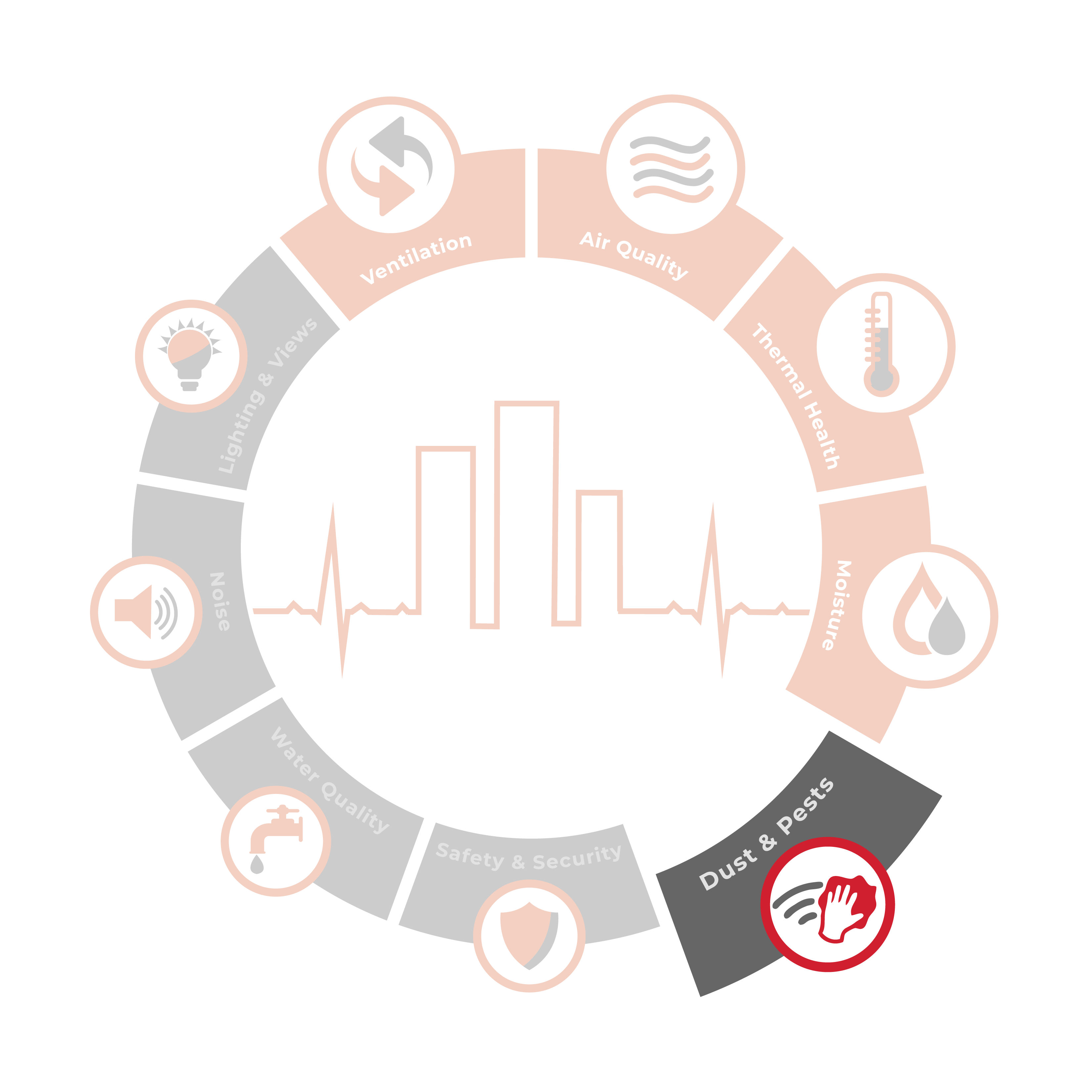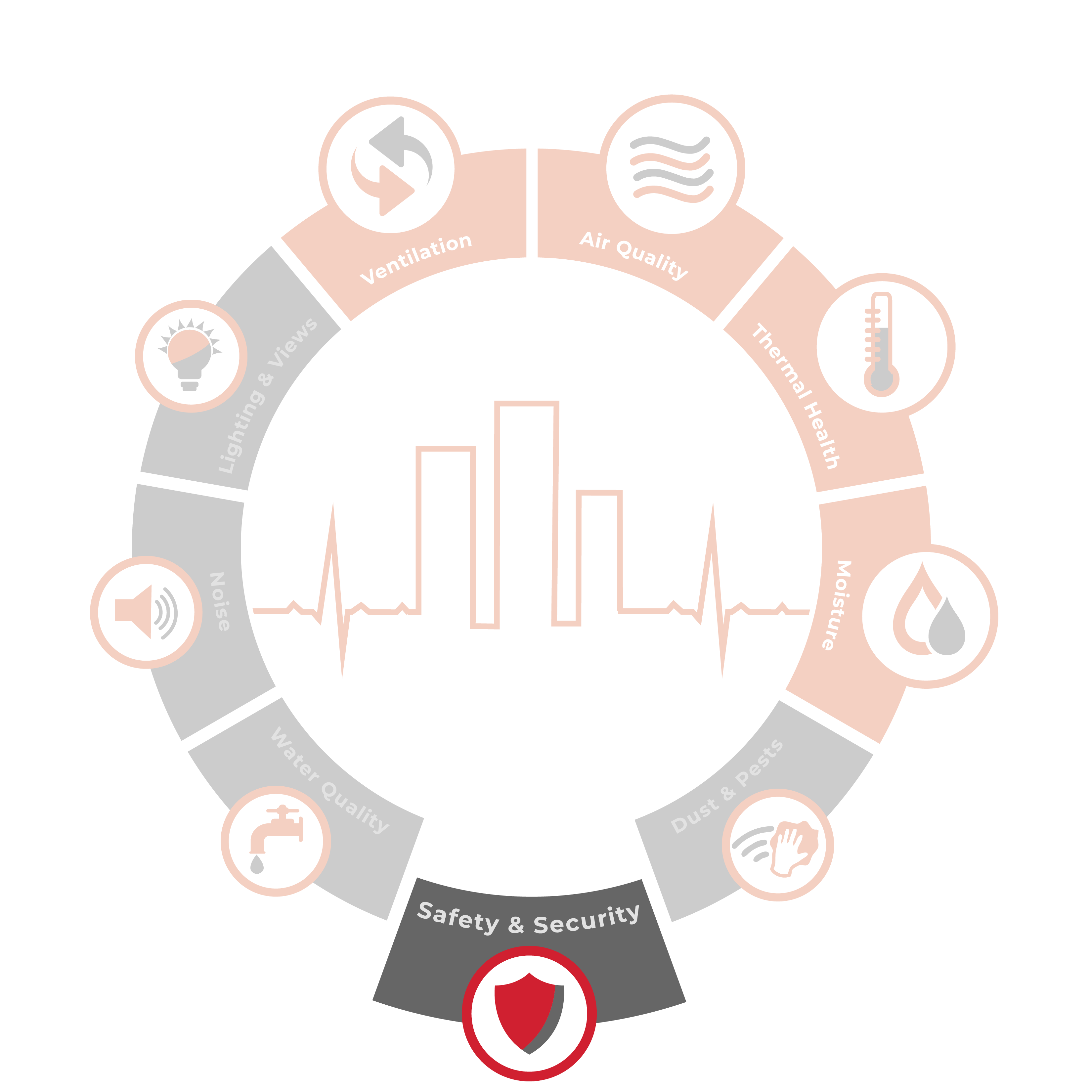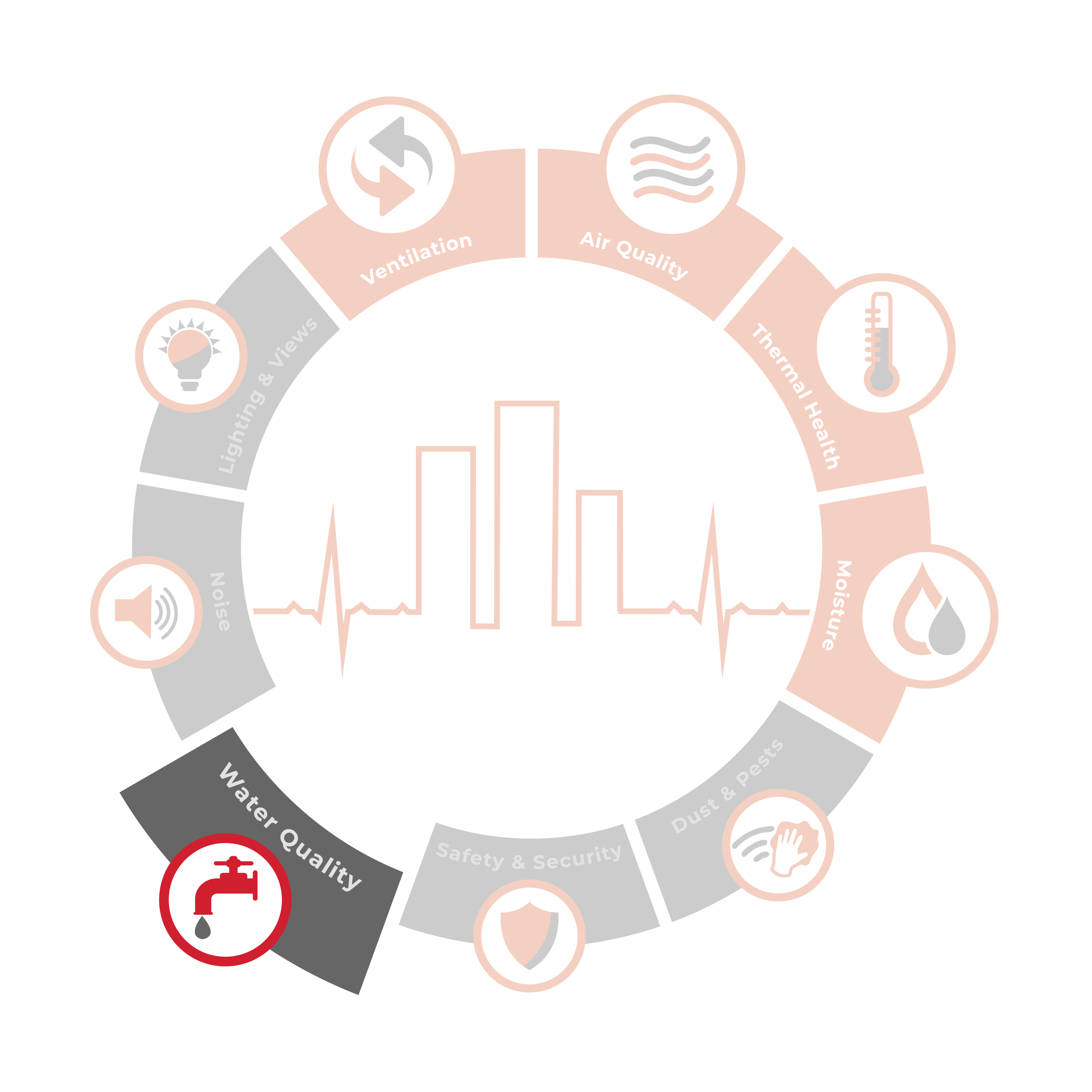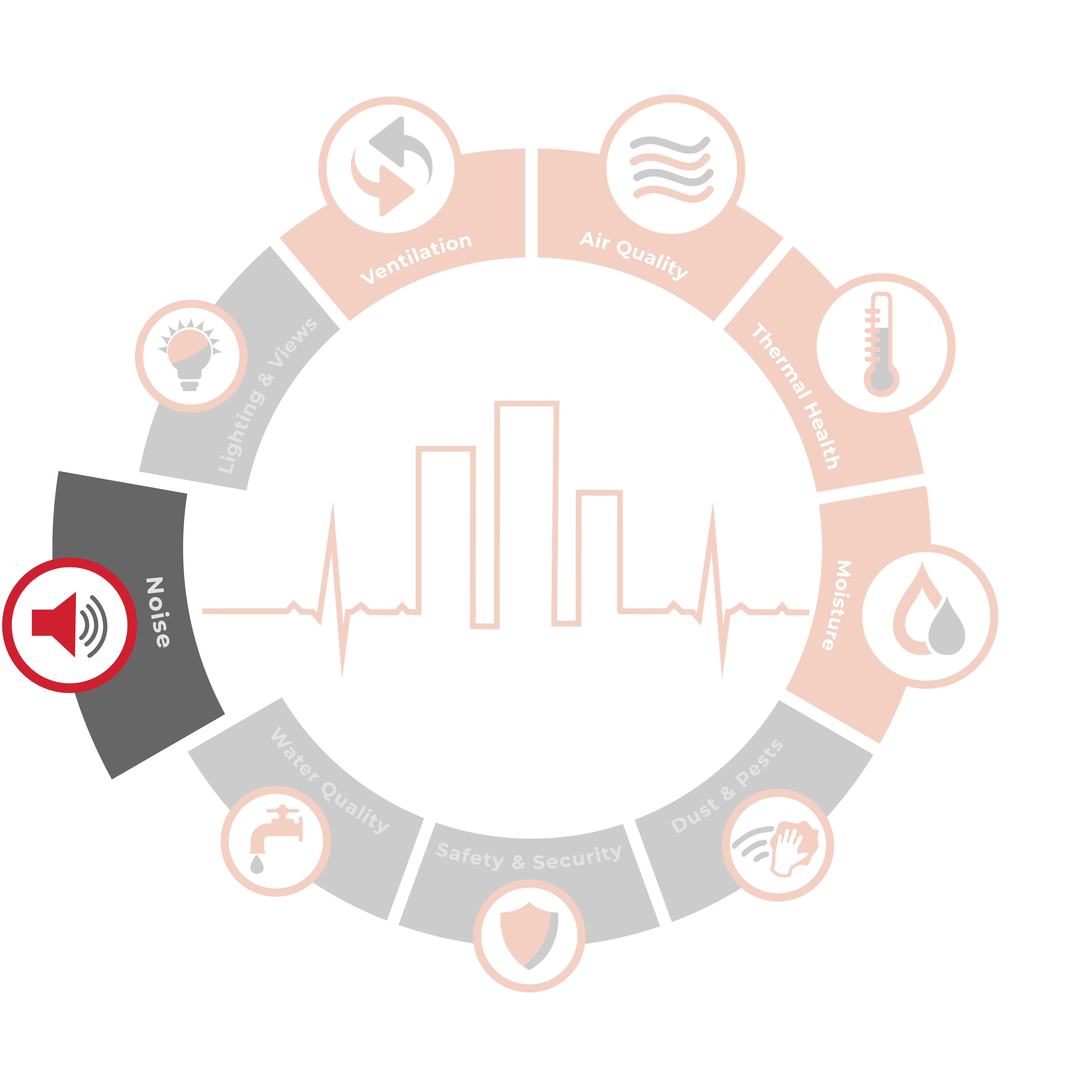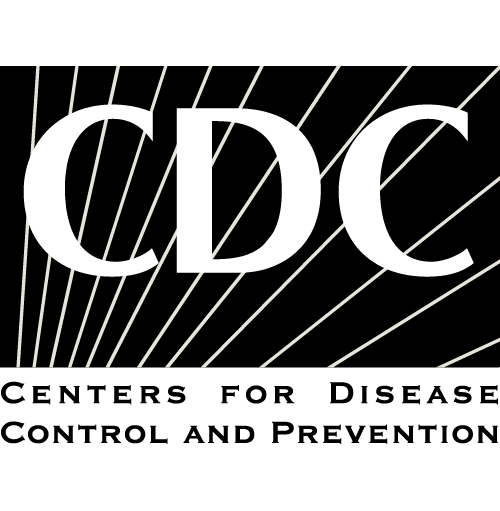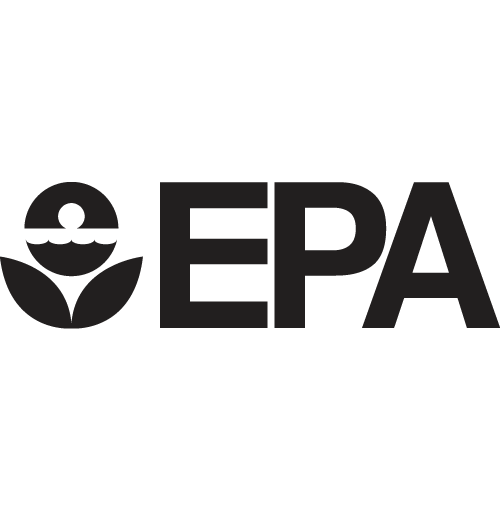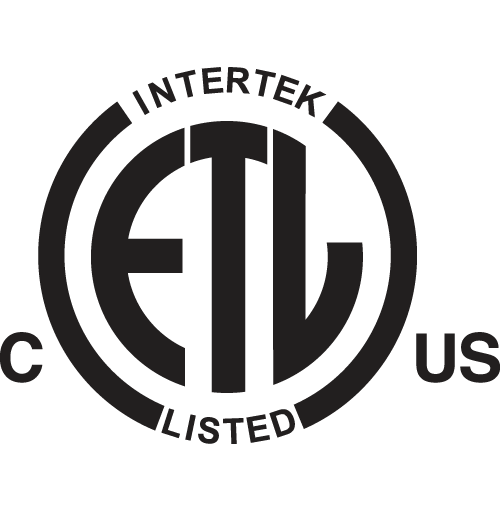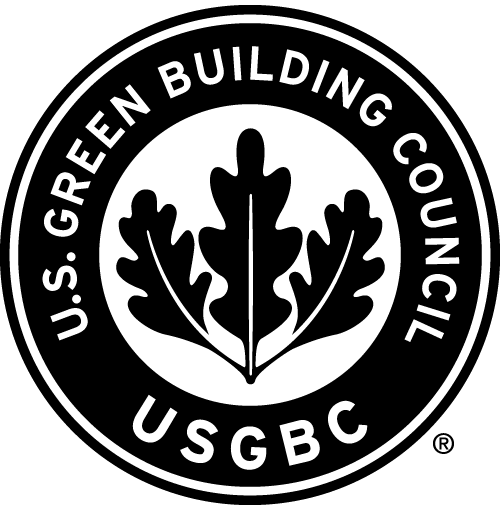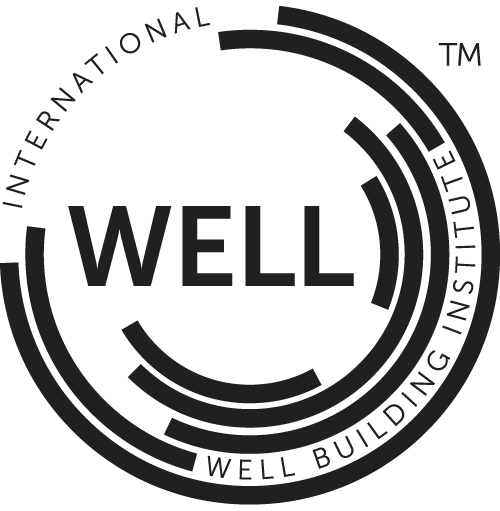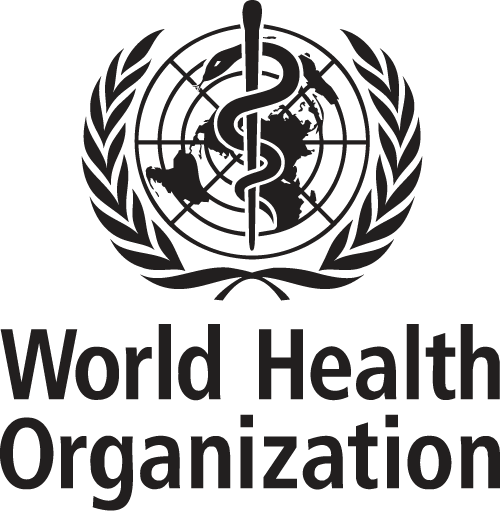ASHRAE 241 represents a significant advancement in how we approach indoor air quality and public health in buildings. Released in June 2023, this standard establishes a framework for managing infectious aerosols in indoor spaces, with implementation of new filter requirements beginning January 2025.
At its core, the standard addresses a fundamental question: How can we make indoor spaces safer from airborne disease transmission? The answer lies in a comprehensive approach that considers three interconnected factors. First, it examines the number of people in a space, as occupancy directly affects the potential for disease spread. Second, it considers the amount of fresh outdoor air being introduced into the building. Third, and perhaps most critically, it evaluates the effectiveness of air cleaning systems, particularly focusing on filtration.
The standard introduces an important shift in how we measure filter performance through the MERV-A rating system. This approach is more rigorous than previous standards because it measures filter performance after simulated long-term use, typically equivalent to about six months of operation. This change is particularly significant because not all filters perform the same way over time. Traditional mechanical filters made from glass fiber maintain, and even increase from, their initial performance level, while electrostatically charged media filters (made from synthetic materials) may experience some decrease in efficiency over time.
Building managers and operators have several paths to achieve compliance with ASHRAE 241. They can increase the amount of outdoor air brought into the building, install more effective filtration/air cleaning systems, adjust occupancy levels, or implement a combination of these strategies. The flexibility of this approach allows buildings to choose the most practical and cost-effective solution for their specific situation.
The implementation of this standard marks an important evolution in building management practices. While it isn't currently mandated by regulatory bodies, it provides clear, science-based guidelines for creating healthier indoor environments. This is particularly relevant in our post-pandemic world, where awareness of airborne disease transmission has heightened significantly.
The standard operates during what's called "Infection Risk Management Mode", though it doesn't specify exactly when this mode should be activated. This gives building operators the flexibility to implement these stricter air quality measures when they deem necessary, such as during local disease outbreaks or seasonal illness peaks
One of the most practical aspects of the standard is how it links filtration efficiency to occupancy levels. Buildings using higher-rated filters (particularly those above MERV 11-A) can safely accommodate more occupants. This creates a clear, quantifiable connection between air quality investments and building utilization, helping justify upgrades to filtration systems.
For building operators and facility managers, understanding and implementing ASHRAE 241 represents an opportunity to take a proactive approach to occupant health and safety. While the technical aspects of the standard may seem complex, the goal is straightforward: create indoor environments that better protect people from airborne infections while maintaining practical and efficient building operations.
ASHRAE 241 Calculation Guide Explained
The calculations in ASHRAE 241 might seem complex at first, but they're designed to create a clear relationship between clean air delivery and occupancy safety. The key insight is that you can achieve compliance through multiple approaches: bringing in more outdoor air, improving filtration, or managing occupancy levels.
What makes these calculations particularly practical is that they allow building managers to make informed decisions about tradeoffs. For instance, if increasing outdoor air intake is expensive due to heating/cooling costs, they might choose to invest in better filtration instead. The calculator provided in the standard helps make these decisions more straightforward.
ASHRAE 241 Clean Air Calculations Guide
Core Formula for Minimum Clean Airflow
The fundamental calculation in ASHRAE 241 determines the minimum equivalent clean airflow rate (VECAi) required in a space:
VECAi = ECAi × PZ,IRMM
Where:
- VECAi is the minimum equivalent clean airflow rate needed in the breathing zone
- ECAi is the equivalent clean airflow rate required per person (from Table 5-1 in the standard)
- PZ,IRMM is the number of people in the breathing zone during Infection Risk Management Mode
Total Clean Airflow Requirement
To meet the standard, the following equation must be satisfied:
(zf × VOT) + VVMS + VACS + VNV ≥ VECAi
Where:
- zf: Zone air fraction (supply airflow to zone ÷ total supply airflow to all zones)
- VOT: Outdoor air intake flow rate
- VVMS: Multizone air cleaning system equivalent clean air flow rate
- VACS: Air cleaning system equivalent airflow rate
- VNV: Outdoor airflow rate from natural ventilation
Filter Effectiveness Calculations
The standard uses weighted calculations to determine filter effectiveness:
- For filters in series, their combined effectiveness is calculated using Section 7-2 formulas in the ASHRAE 241 standard
- Individual filter effectiveness is based on E1, E2, and E3 efficiencies from ASHRAE 52.2 testing
- Filters below MERV 11 receive no credit in the calculations
Practical Example: Hospital Waiting room
Consider an office space with these parameters:
- Room Area: 2000 sq ft
- Ceiling Height: 10 ft
- Total Supply Air: 1000 CFM
- Total Outdoor Air: 400 CFM
- Occupancy: 20 people
- Filter System: MERV 11 (60% efficiency)
Calculations:
- Clean Air from Outdoor Air = 400 CFM
- Clean Air from Filtration = 600 CFM × 60% = 360 CFM
- Total Equivalent Clean Air = 760 CFM
- Clean Air per Person = 760 CFM ÷ 20 people = 38 CFM/person
If the standard requires 30 CFM/person, this configuration would pass.
Ways to Improve Clean Air Calculations
To increase equivalent clean air, you can:
- Increase outdoor air volume
- Upgrade filter efficiency (MERV rating)
- Add supplemental air cleaning
- Reduce occupancy
- Increase total air circulation
For hospitals, these calculations take on heightened importance due to the vulnerability of patients and the increased risk of infectious disease transmission. Let's consider different hospital areas and how the calculations would apply:
In a typical patient room: The standard would require higher clean air rates due to the presence of potentially infectious patients. If we assume a standard private room of 200 sq ft with up to 4 people (patient, two visitors, and a healthcare worker), the calculations would need to account for:
VECAi (Minimum Clean Airflow) would need to be higher than standard commercial spaces:
- Instead of the typical 30 CFM/person used in commercial spaces
- Hospitals might need 40-60 CFM/person or higher depending on the area
- For our example room with 4 people, this could mean needing 160-240 CFM of equivalent clean air
In more critical areas like:
Operating Rooms:
- Would require significantly higher air change rates
- Typically need MERV 14 or higher filtration
- Calculations would need to account for:
- Higher occupancy during procedures (surgical team)
- Need for ultra-clean air
- Positive pressure requirements
Emergency Department:
- Must handle variable occupancy
- Needs to account for unknown infectious status of patients
- Calculations would focus on:
- Maximum possible occupancy scenarios
- Higher air change rates
- Possible negative pressure requirements
Isolation Rooms:
- Special considerations for negative pressure
- Higher air change requirements
- Calculations must ensure:
- Sufficient negative pressure is maintained
- Adequate dilution of potential contaminants
- Proper filtration of exhausted air
Emergency Department Waiting Area Calculation Example
Space Parameters
- Area: 1000 sq ft
- Ceiling Height: 9 ft
- Design Occupancy: 30 people (patients + family members)
- HVAC System:
- Total Supply Air: 2000 CFM
- Current Outdoor Air: 500 CFM
- MERV 14 Filtration (85% effective for infectious aerosols)
Base Calculations
1. Minimum Required Clean Air:
- Target: 50 CFM/person (higher than commercial due to healthcare setting)
- VECAi = 50 CFM × 30 people = 1500 CFM minimum required
2. Current Clean Air Delivery:
- From Outdoor Air: 500 CFM
- From Filtration: (2000 - 500) × 0.85 = 1275 CFM
- Total Equivalent Clean Air: 500 + 1275 = 1775 CFM
3. Clean Air per Person:
- 1775 CFM ÷ 30 people = 59.2 CFM/person
- Exceeds minimum requirement of 50 CFM/person
Improvement Options
If higher clean air rates are needed:
1. Increase Filtration:
- Upgrade to MERV 15 (95% effective)
- New filtered air: (2000 - 500) × 0.95 = 1425 CFM
- New total: 500 + 1425 = 1925 CFM
- New per person: 64.2 CFM/person
2. Increase Outdoor Air:
- Increase to 750 CFM outdoor air
- Filtered air: (2000 - 750) × 0.85 = 1062.5 CFM
- New total: 750 + 1062.5 = 1812.5 CFM
- New per person: 60.4 CFM/person
3. Add Supplemental Air Cleaning:
- Add HEPA air cleaners with 500 CFM CADR
- New total: 1775 + 500 = 2275 CFM
New per person: 75.8 CFM/person
As a global leader in air filtration solutions for industrial and commercial environments, American Air Filter offers specialized expertise in ASHRAE 241 compliance and products to protect both your personnel and facilities. Contact an AAF representative to design a filtration strategy tailored to your facility's specific needs.




